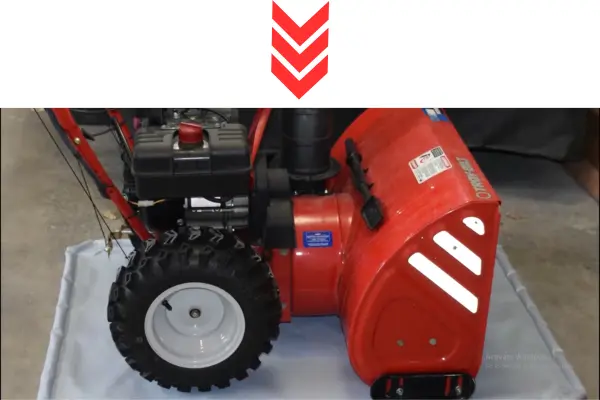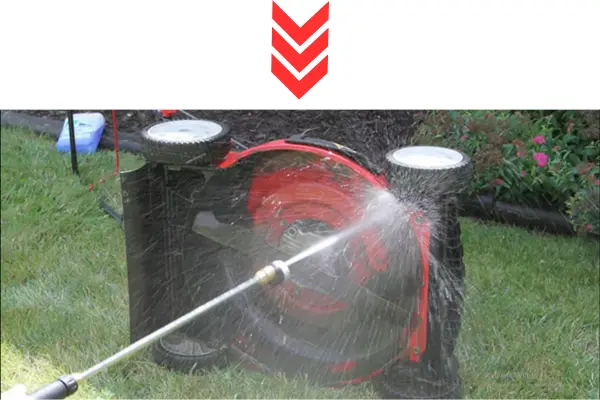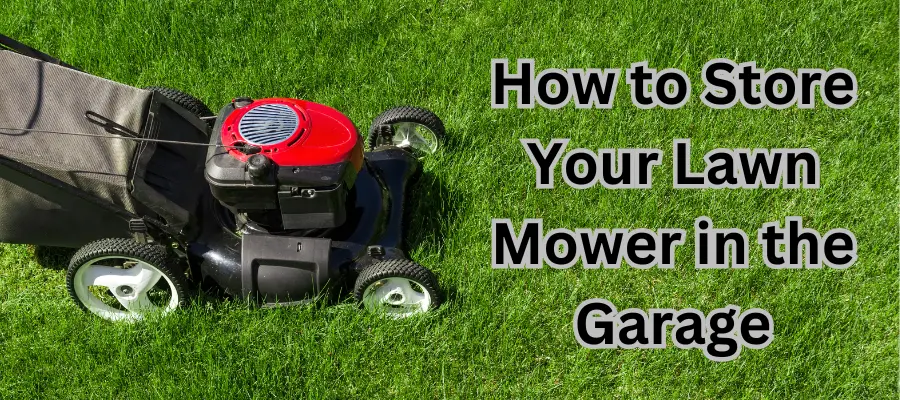Wondering how to store your lawn mower in the garage effectively? Storing your lawn mower correctly not only extends its lifespan but also keeps your garage neat and organized.
This article covers everything you need to know, from preparing your garage to protecting your mower during the off-season.
Properly storing your lawn mower in the garage can prolong its life and keep your garage organized.The following tips will ensure your equipment stays in top condition.
📌Why Proper Lawn Mower Storage Matters
A lawn mower is a significant investment that requires proper care and storage to function efficiently. Improper storage can lead to issues such as rust, fuel degradation, and physical damage. By following these guidelines, you’ll extend the life of your mower and maintain a safe, organized garage.
📌Preparing Your Garage for Lawn Mower Storage
Assessing Garage Space
Start by ensuring you have enough space in your garage.
Measure: Start by measuring the dimensions of your lawn mower and the available space in your garage. This will help you determine the best spot for storage.
Plan: Create a floor plan for your garage. Consider where doors, windows, and other permanent fixtures are located to avoid blocking access.
Creating Additional Storage
Maximize your garage space with additional storage solutions:
Shelving Units: Install shelves along the walls to store smaller items.
Hooks and Pegboards: Use hooks and pegboards to hang tools and equipment.
Storage Bins: Use labeled storage bins for seasonal items or infrequently used tools.
📌Protecting Your Lawn Mower
Using a Floor Mat

A floor mat can protect both your lawn mower and your garage floor.
Types of Floor Mats: A polyvinyl floor mat is ideal as it’s durable and can withstand the weight of bulky items. You might also consider rubber mats, which are equally durable and provide good traction.
Benefits: The mat catches any oil leaks, grass clippings, or other debris, keeping your garage cleaner and preventing damage to the floor.
Building a Sloped Platform or Wheel Ramp
If you frequently use your lawn mower, consider a sloped platform or wheel ramp. This makes it easier to move the mower in and out of storage.
Building a Ramp: A simple wooden ramp can be constructed with basic tools and materials. Ensure it’s sturdy enough to support the weight of your mower. For example, use treated lumber to prevent rot and ensure longevity.
Additional Storage: A ramp can create space underneath for storing other items, further optimizing your garage organization.
Covering the Lawn Mower

ven when stored indoors, a cover is crucial for protecting your lawn mower from dust and humidity.
Choosing the Right Cover: Look for a hydrophobic cover made from materials like vinyl or polyester. These materials are durable and effective at repelling moisture.
Benefits: A cover prevents dust accumulation and protects the mower from potential rust, especially in humid conditions.
Installing a Wall Hanger
For smaller lawn mowers, a wall hanger can be a great storage solution.
Installation: Ensure the wall hanger is securely attached to a stud or use appropriate wall anchors. You can find specialized hangers designed for lawn mowers, which provide better support.
Safety: Keeping the mower off the ground reduces tripping hazards and frees up floor space.
📌Winterizing Your Lawn Mower
Winterizing your lawn mower ensures it remains in good condition during the off-season.
Steps to Winterize
Remove the Battery: Disconnect the battery and store it in a dry location.
Drain or Stabilize the Fuel: Use a fuel stabilizer to prevent fuel degradation.
Clean the Mower: Remove debris and clean the mower thoroughly.

Example: Step-by-Step Winterization
Removing the Battery: Use a wrench to disconnect the battery terminals.
Draining Fuel: Add a fuel stabilizer to the tank and run the engine. Siphon out remaining fuel.
Cleaning the Mower: Remove the spark plug and clean the engine and mower deck. Rinse with a hose and let it dry completely.
📌Additional Tips for Long-Term Storage
Proper long-term storage ensures your lawn mower is ready to go when needed.
Regular Maintenance: Check for rust, clean, and ensure no parts are loose.
Dry Storage: Ensure your garage is dry and well-ventilated.
Covering: Always keep your mower covered to protect it from dust and debris.
Conclusion
Properly storing your lawn mower in the garage involves thoughtful planning and regular maintenance. By ensuring adequate space, protecting your mower with floor mats and covers, and winterizing it properly, you can extend the life of your lawn mower and maintain an organized garage. Following these tips will ensure your lawn mower remains in excellent condition, ready to tackle your lawn whenever you need it.
FAQs: How to Store Your Lawn Mower in the Garage
How Do I Know If My Garage Has Enough Space?
Measure your garage and the dimensions of your lawn mower. Ensure there’s enough room to maneuver the mower without obstruction.
Can I Store My Lawn Mower Outside?
It’s not recommended. If you must, use a durable, waterproof cover and place it on a raised platform.
How Often Should I Check My Lawn Mower During Storage?
Perform a quick check every month to ensure there’s no moisture buildup, the cover is intact, and there are no signs of rust or damage.
What If I Have a Ride-On Mower?
Ensure ample space and consider using a larger ramp for easy access. Follow the same winterizing steps but take extra care with the battery and fuel systems.
Is It Necessary to Remove the Battery Every Winter?
Yes, removing the battery prevents it from draining and reduces the risk of corrosion.
How Do I Prevent My Lawn Mower from Rusting?
Keep your mower clean and dry. Use a protective cover and store it in a dry, ventilated area. Regular maintenance checks will also help prevent rust.

